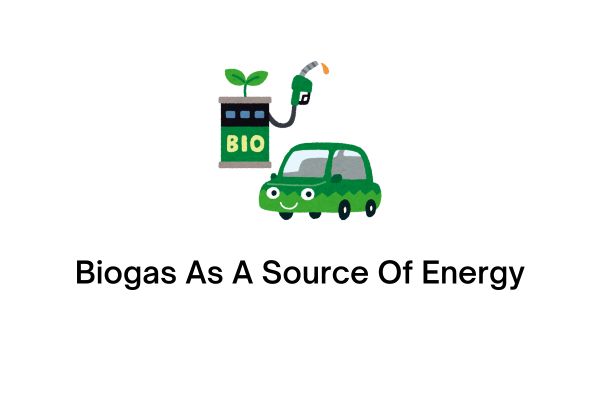Biogas is a process of producing biogas from organic material with the help of bacteria. The process of degrading organic material without Biogas as an Alternative Energy Source Biogas is a process of producing biogas from organic material with the help of bacteria.
The process of degrading organic material without involving oxygen is called anaerobic digestion. The gas produced is mostly (more than 50%) methane. Organic material collected in the digester (reactor) will be decomposed into two stages with the help of two types of bacteria. The first stage of organic material will be degraded into weak acids with the help of acid-forming bacteria.
These bacteria will decompose waste at the level of hydrolysis and acidification. Hydrolysis is the decomposition of complex compounds or long-chain compounds such as fats, proteins, carbohydrates into simple compounds. While acidification is the formation of acids from simple compounds.
After organic material turns into acids, the second stage of the anaerobic digestion process is the formation of methane gas with the help of methane-forming bacteria such as methanococus, methanosarcina, methanobacterium.
Biogas mostly contains methane (CH4) and carbon dioxide (CO2), and some small amounts of hydrogen sulfide (H2S) and ammonia (NH3) as well as hydrogen and (H2), nitrogen which are very small in content.
The energy contained in biogas depends on the concentration of methane (CH4). The higher the methane content, the greater the energy content (calorific value) in the biogas, and conversely the smaller the methane content, the smaller the calorific value.
The quality of biogas can be improved by treating several parameters, namely: Removing hydrogen sulfur, water content and carbon dioxide (CO2).
Daftar Isi
Converting Biogas to Electricity
Biogas energy has great potential to be developed because livestock biogas production is supported by conducive conditions from the development of the cattle farming world in Indonesia today. In addition, the increase in electricity rates, the increase in the price of LPG (Liquefied Petroleum Gas), premium, kerosene, diesel oil, diesel oil and fuel oil have encouraged the development of alternative energy sources that are cheap, sustainable and environmentally friendly
Biogas energy conversion for power generation can be done using gas turbines, microturbines and Otto Cycle Engines. The selection of this technology is greatly influenced by the potential of existing biogas such as methane gas concentration and biogas pressure, load requirements and the availability of existing funds. As a power generator, the energy produced by biogas is equivalent to 60-100 watts of light for 6 hours of lighting.
In the book Renewable Energy Conversion, Transmission and Storage, Bent Sorensen, that 1 Kg of methane gas is equivalent to 6.13 x 107 J, while 1 kWh is equivalent to 3.6 x 107 J. The density of methane gas is 0.656 kg / m. So that 1 m3 of methane gas produces electrical energy of 11.17 kWh.
Conclusion
Biogas has good prospects as an alternative energy to replace non-renewable energy in Indonesia which is experiencing an energy crisis characterized by the increasing scarcity and high price of fuel which has an impact on the increasing production costs of power plants.
Read Also:
